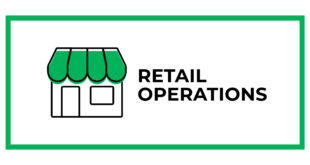So you’ve decided to build, or update, your company’s website. That’s a smart move—in a world where technology is ever-increasing, it’s important for retailers to use that technology to reach their audience.
Whether you’re making your website simple and to the point or more complex, with extra features, here are five elements you should be sure to include.
“About Us” Information
Whether it’s a history of your business or a list of categories you focus on, customers will find it both informative and interesting to learn more about your store. Not only does it let them know if you carry what they’re looking for, it also tells them a little more about your operation and helps build your brand. (This is also a good place to talk about your involvement in the community.)
Store Hours and Locations
Your customers need to know where your store is located, and when it’s open for business. The location and hours should be easy to find as soon as someone pulls up your site’s home page. Try adding a map, too, with each of your locations pinpointed so customers can see exactly where they are (rather than just an address). If you want to take it a step further, add a “Directions” button they can click on to get directions to a store.
Products and Services
Add a “Products” tab to your website where you can list some of the most popular products (or brands) you offer, allowing customers to look online and quickly see if you carry what they need. Similarly, add a “Services” tab where you can highlight some of your most popular services, such as key cutting, screen repair or knife sharpening. Providing this information helps your customers learn more about your store before they even set foot in the door.
Social Media Links
Your website is the place to advertise your Facebook, Twitter or Pinterest accounts, or any other social media accounts you have. The more ways customers can reach you, the more likely they are to interact with you and other customers—which will also increase your traffic across all channels. Add logos for all your social media accounts in one place on the home page that customers can click on to be taken directly to those accounts. Also take a close look at the content you’re posting to make sure your brand is consistent, so your Twitter followers receive the same message as your Facebook followers.
High-Quality Photos
Not only is it important to have photos on your website, but it’s important to have clear, high-resolution photos that show off your store and the products and services you offer. Include a variety of interior and exterior store shots as well as several photos of endcaps, power aisles and special displays. If you list your employees’ names and titles on your website, consider adding headshots of them as well.
 Hardware Retailing The Industry's Source for Insights and Information
Hardware Retailing The Industry's Source for Insights and Information








